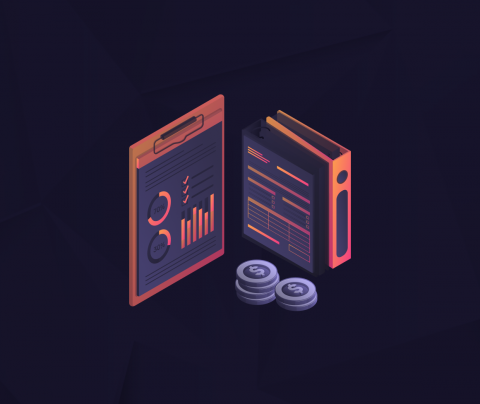I remember the first time I tried to build a lead generation system from scratch. I thought: how hard can it be? Buy some traffic, slap up a form, and boom – leads. Spoiler: it didn’t work. Not even close. Because what I didn’t understand then (and what most people still miss today) is that lead generation is a system, not a task. And when you nail the system? That’s when everything gets easier.
Let’s break it down.
Understanding the Modern Lead Generation Process
Everyone wants more leads. But wanting leads and generating qualified, revenue-producing leads? That’s not the same game. Modern lead generation is complex. There are moving parts. Multiple platforms. Traffic from different sources. And more often than not, a huge gap between intent and action.
Here’s the truth no one tells you at the beginning: most lead gen systems leak. Badly. Leads fall through the cracks. Good traffic goes to dead-end pages. Sales teams complain about quality. Budgets get wasted. And worst of all? No one knows exactly where the problem is coming from. You might be running paid ads, but if the form loads slowly, people bounce. You might be collecting emails, but if the routing is off, the best leads end up going nowhere. You might even have a CRM… but if the data’s messy or incomplete, your follow-up doesn’t stand a chance.
The entire process from click to close has to be engineered like a factory line. Every handoff matters. Every delay costs you money. And when you don’t have visibility into what’s happening – or worse, you’re stuck managing it manually – it becomes a full-time job just keeping things from breaking.
Essential Components of a Lead Generation System
Every effective lead generation system is built around five core pillars: capture, validation, routing, tracking, and monetization. If any one of these pillars is unstable or missing, the whole thing wobbles. Sometimes it crashes.
Let’s walk through each one. Capture is how you collect leads. It sounds simple, but it’s a place where many businesses lose out. A clunky form. A page that doesn’t load. An experience that feels outdated or sketchy. These small things destroy trust, and trust is everything when it comes to conversion. Validation ensures you’re not wasting time with garbage. Fake emails. Duplicate entries. Bots. Without filters in place, your lists become polluted fast. And when that happens, it doesn’t just mess with your metrics – it hurts your sender score, your ad relevance, your attribution models. Everything.
Routing is where a lot of operations fall apart because getting a lead is one thing. Getting it to the right place, at the right time, based on logic that makes sense? That’s where the rubber meets the road. Without smart routing, you either overwhelm your top partners or let golden leads go cold. Tracking gives you the data to improve. Without real-time insights, you’re blind. Are you getting more fraud this week than last? Are certain traffic sources converting better on mobile? Is your A/B test statistically significant? These questions only get answered if your system is feeding you the truth in real time.
Monetization is the end goal. Whether you’re qualifying leads for your own sales team or reselling them through a partner network, the revenue depends on everything before this point being airtight. A solid system supports every one of these steps. Anything less? That’s a liability.
Lead Capture Software: What to Look For
Many marketers make the mistake of treating lead capture as an afterthought. They think any form builder will do. They rely on plugins that haven’t been updated in years. And they wonder why their numbers suck.
Good capture software is fast. And I mean fast. Two seconds is the difference between someone who fills it out and someone who gives up. It has to work across all devices, on slow mobile connections, and in multiple languages if necessary. It also needs to be flexible. Maybe you want to pass UTMs into hidden fields. Maybe you need a fallback page for specific geos. Maybe you want to trigger different capture logic based on the campaign. If the tool can’t do it, you end up hacking together a workaround, and workarounds break.
Here’s where fraud comes into the picture again. You don’t want your forms filled with junk traffic or scripts. That means your software better know how to tell a real user from a bot. Cookie logic, fingerprinting, and behavioral signals can significantly enhance this process.
And last – integrations. If I have to download a CSV and upload it somewhere else, I’m out. The whole point is to automate the pipeline, not create more chores. Hyperone gets this right by giving users fast, frictionless capture tools that talk to the rest of the system instantly. That’s the experience you want.
Lead Routing Software & Distribution
Let’s talk about where the real losses happen. Lead routing.
I’ve seen six-figure campaigns die in the final ten feet. The lead gets captured. It’s valid. But then… nothing. It sits in a queue. Or it gets sent to a team that’s not even working that day. Or the rules are wrong, so all the high-intent buyers go to the worst-converting offer.
It’s a tragedy. But it’s also avoidable. Lead routing software solves this by letting you set rules – rules that match your business logic. You decide who gets what, when, and under what conditions. It’s like air traffic control for your leads.
Hyperone’s UAD system does exactly that. Here’s what that might look like:
- High-intent traffic from your top-performing Facebook campaign gets routed to your best-finishing internal offer.
- Mid-tier leads from display go to a second-tier buyer with lower conversion thresholds.
The idea is simple: don’t treat every lead the same. Because they’re not. Segment by quality. Segment by source. Segment by expected value. You can even go one step further and use real-time performance data to adjust routes automatically. That’s where you stop being reactive and start being predictive. That’s how the best operations run.
Maximizing ROI with Efficient Lead Generation
ROI isn’t magic. It’s engineering.
And it’s not always about more traffic. Sometimes, it’s about better flow. Better decisions. Better feedback loops. When you fix the leaks in your system, especially in capture and routing, you start getting more out of what you already have. Think about it. Let’s say you improve your routing logic and reduce the delay by 30 minutes. That alone can lift conversion by 20%. Or you filter out junk traffic before it hits your CRM. Your sales reps stop wasting time on dead leads. They close more, faster.
And that’s where automation becomes your best friend. Let the system flag anomalies. Let it reroute when caps are hit. Let it pause campaigns when fraud is detected. Let it surface the top-performing combos of source + offer + geo – so you can double down with confidence. Hyperone’s real-time dashboards make this possible. But it’s not just about the software. It’s about building a system that you can trust to do the right thing without you watching it 24/7.
Because when your system runs well? You get to scale without burnout. You get to test without risk. You get to focus on what matters – strategy, creative, and new channels.
Concluding remarks
Most people overcomplicate lead gen. Or worse, they oversimplify it. But it’s not just forms and follow-ups. It’s a machine. One that either runs profitably… or drains your time, energy, and budget.
I’ve been on both sides. And if you’re reading this, you probably have too. Hyperone was built by people who’ve felt the pain of bad lead gen. Who’s watched good campaigns die from technical debt? Who’ve lost money on slow forms, bad routes, and data blackouts.
That’s why the platform exists. To make lead generation systems easy to build, easier to run, and stupidly profitable when done right. So yeah – you can keep duct-taping your stack together. Or you can build a machine that works.
You already know what I’d choose. (And if you want to see how Hyperone does it? You know where to find us.)













